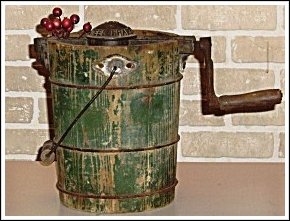Cool History of Ice Cream



Some say it was the Emperors of China who first made snow ice cream. Their chefs mixed snow and ice from the mountains with fruit, wine and honey to make tasty treats. Researchers have also found references to King Tang (A.D. 618-97) of Shang, China who created ice and milk concoctions. Although, these recipes were frozen, they were not ice cream. Others say it was Nero, in the 4th century B.C. who had ice brought from mountain tops and threw some fruit toppings on it.
Ice cream as we know it, is thought to have its’ origins in the court of Charles I of England. When he visited France in the 1600s, he was treated to frozen milk and he took the recipe back to England with him. One story says the royal chef was ordered never to reveal the “secret recipe.” But, upon the Kings’ beheading in 1649 it soon became public knowledge.
It was around the 1700s the term “iced creams” came into vogue. Several recipes were included in a 1700 French cookbook and about the same time the first newspaper ad for ice cream appeared. In 1776/77 the first ice cream shop in America opened in New York City. They later became fashionably known as “parlors.”
But, ice cream was still only a luxury of the socially elite. It wasn’t available at corner supermarkets. It took time, patience and a lot of work to make. However, that slowly began to change in 1843. That was the year Nancy Johnson introduced the first hand-crank ice cream maker. The invention was fine for family get-togethers and other small scale production, but it would still be years before making ice cream would become an industry.


Jacob Fussell, a Baltimore milk dealer, is given credit for that innovation in 1851. He was seeking ways to bolster sales for his cream. He found making it into ice cream was the perfect answer…and at double his asking price.
However, the ice cream industry was still in its infancy. It wasn’t until the 1900s and advances in refrigeration made massive production feasible. But, as any economist knows, before supply comes demand. Ice cream was served in several ways. It could be served as a sundae or in a cone.
There are several interesting accounts about where the sundae originated. Most concern religious opposition to the practice of “sucking soda” in the late 1800s. It seems several vendors got around the stigma by serving ice cream topped with syrup…on Sunday…and changed the spelling of Sunday to sundae.
As to who actually invented the ice cream cone, there seems to be a bit of confusion. It’s generally accepted the cone was “discovered” in 1904 at the St. Louis World’s Fair by Syrian immigrant Ernest Hamwi who was hawking “zalabia,” a waffle-like pastry from a pastry cart. Another vendor, Arnold Fornachou, had run out of paper dishes to serve his ice cream. Hamwi gave Fornachou some of his pastry from which he fashioned a make-shift cone.
Although there were many others selling ice cream at the fair who claimed they introduced the cone, Hamwi is recognized as the originator since he had been a sailor, and early ice cream cones were said to have been shaped around a sailor's tool, which Hamwi supposedly had with him at the time. Furthermore, Hamwi later formed his own cone making company.
However, there were other serious contenders for the honor of being first to make the cone. There was Italo Marciony who said he created the cone on September 22, 1896! Marciony sold cones from a pushcart in New York City and he had a patent for a waffle mold, granted eight months before the St. Louis Fair! His invention was designed to make cones.
Previously, Marciony sold homemade lemon ice from a pushcart on Wall Street. At the time, most ice cream vendors sold their products in serving glasses called "penny licks." They were appropriately named because customers would lick ice cream from the glass and it cost a penny.
There was only one problem. Customers accidently broke the glasses or simply walked off with them…a major business expense. Marciony initially came up with an idea to make containers out of paper. They didn’t break, were inexpensive and much more sanitary. They worked fine. But, Marciony came up with an even better and original idea. Why not make the containers edible as well. So, the waffle cone was born.
In 1899, Frenchman, August Gaulin, invented the homogenizer, a machine which gave ice cream a smoother texture. And in 1902, he invented a new freezer that froze ice cream faster..
After bars selling alcoholic beverages in America began to close in 1919, many ice cream parlors appeared to take their place. As a result, the demand for ice cream rose dramatically. The more Americans ate, the more they wanted. This demand for more ice cream led to the first chocolate covered ice cream bar, called the “I-Scream Bar.” It later became the well known “Eskimo Pie.” The Good Humor Bar, the first ice cream on a stick, followed in 1920. Ice cream was fast becoming an American icon.





